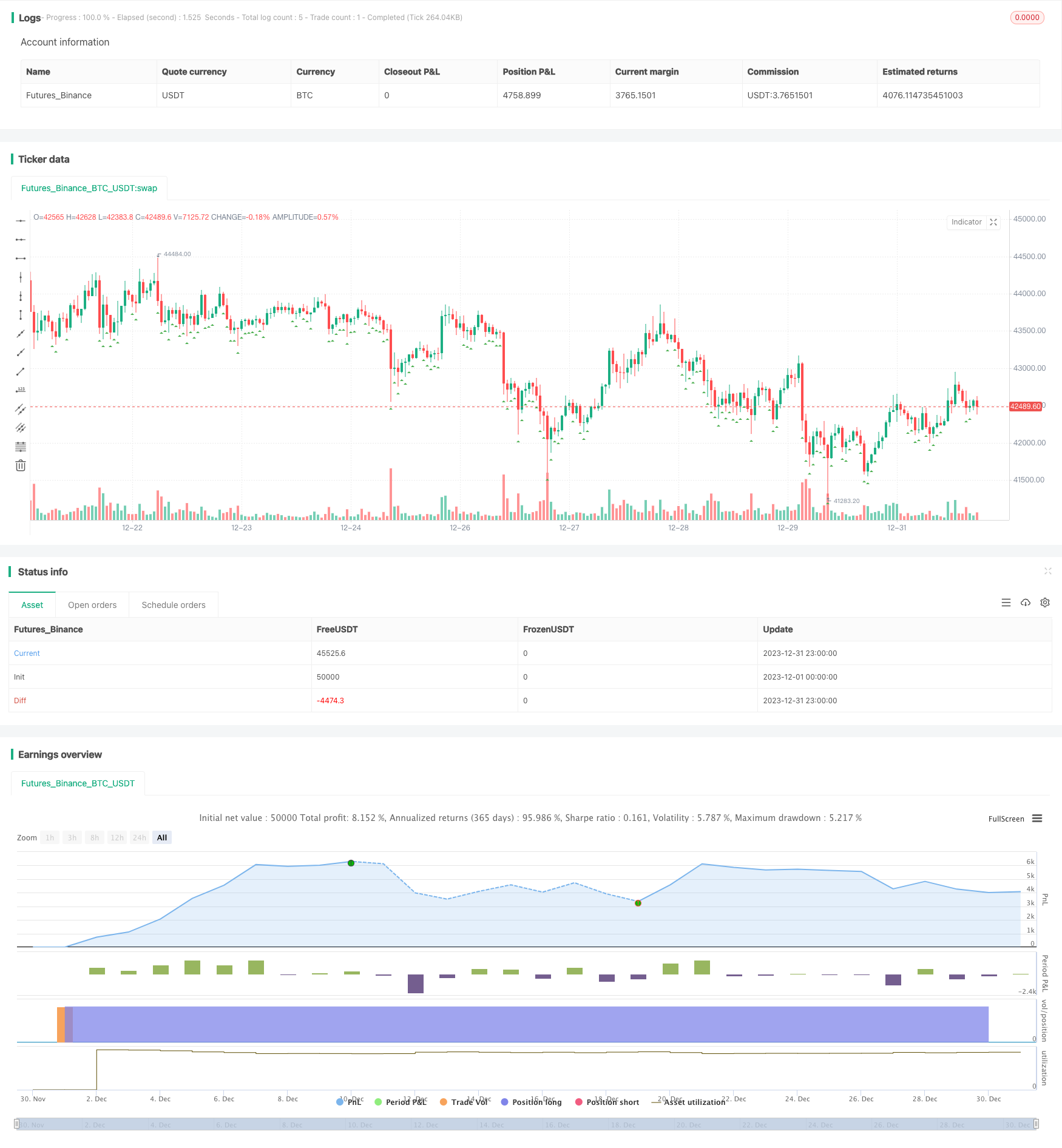Estratégia de negociação do indicador RSI Sucker

Visão geral
A estratégia de negociação de tração RSI é uma estratégia de negociação de grelha fixa que integra indicadores técnicos RSI e CCI. A estratégia julga o momento de entrada com base nos valores dos indicadores RSI e CCI, usa uma taxa de ganho fixa e uma quantidade de grelha fixa para configurar a ordem de parada e a ordem de acréscimo.
Princípio da estratégia
Condições de entrada
Quando os indicadores RSI de 5 minutos e 30 minutos estão abaixo do limiar definido, e o indicador CCI de 1 hora também está abaixo do valor definido, um sinal de multiplicação é gerado. Nesse momento, o preço de fechamento atual é registrado como preço de entrada e o primeiro ponto de posição é calculado com base no número de juros e grades da conta.
Condições de suspensão
Com base no preço de entrada, o preço de ganho é calculado de acordo com a taxa de lucro-alvo definida e um stop-loss é definido a esse nível.
Condições de acumulação
Com exceção do primeiro, os restantes títulos de posição fixa são emitidos um a um após o sinal de entrada, até atingir o número de grades definido.
Mecanismo de cobertura
Se o aumento do preço em relação ao preço de entrada exceder a porcentagem de redução de cobertura estabelecida, a posição será neutralizada em relação a todas as posições.
Mecanismo de inversão
Se os preços caírem mais do que a percentagem de reversão de margem definida em relação ao preço de entrada, todos os pedidos pendentes serão cancelados e uma nova entrada será esperada.
Análise de vantagens
- A combinação de RSI e CCI aumenta a probabilidade de lucro
- A fixação de metas de lucro através de grades fixas aumenta a certeza de lucro
- Mecanismos de cobertura integrados que protegem contra os riscos de fortes flutuações de preços
- A inclusão do mecanismo de reversão reduz os prejuízos
Análise de Riscos
- Probabilidade de um indicador produzir um sinal de erro
- A volatilidade dos preços ultrapassou a barreira de proteção
- Reencaminhamento após a reversão não permite a reentrada
Estes riscos podem ser reduzidos por meio de ajustes nos parâmetros dos indicadores, ampliando a margem de risco e reduzindo a margem de reversão.
Direção de otimização
- Mais combinações de indicadores para testar
- O mecanismo de supressão da paralisia pode ser estudado.
- Pode-se otimizar a lógica de acréscimo
Resumir
A estratégia de negociação de absorção do indicador RSI julga o momento de entrada por meio de indicadores, usa paradas de grelha fixa e acréscimo de posição para bloquear lucros estáveis. Ao mesmo tempo, a estratégia possui um mecanismo de reentrada após a reversão e a cobertura de grandes flutuações. Esta estratégia que integra vários mecanismos pode ser usada para reduzir o risco de negociação e aumentar a taxa de ganho.
/*backtest
start: 2023-12-01 00:00:00
end: 2023-12-31 23:59:59
period: 1h
basePeriod: 15m
exchanges: [{"eid":"Futures_Binance","currency":"BTC_USDT"}]
*/
//@version=5
strategy("Custom RSI/CCI Strategy with Fixed Grid", shorttitle="INVESTCOIN_RSI_CCI_Fixed_Grid", overlay=true)
// Input parameters
input_rsi_5min_value = 55
input_rsi_30min_value = 65
input_cci_1hr_value = 85
input_profit_target_percent = 0.6 // Target profit in percentage
input_grid_size = 15 // Number of orders in grid
input_hedging_percent = 20 // Percentage price change for hedging
input_first_order_offset = 0.2 // Offset for the first order in percentage
input_reversal_percent = 0.4 // Percentage price change for reversal
// Calculating the RSI and CCI values
rsi_5min = ta.rsi(close, 5)
rsi_30min = ta.rsi(close, 30)
cci_1hr = ta.cci(close, 60)
// Define strategy conditions based on the provided screenshot
long_condition = (rsi_5min < input_rsi_5min_value) and (rsi_30min < input_rsi_30min_value) and (cci_1hr < input_cci_1hr_value)
// Plot signals
plotshape(series=long_condition, title="Long Entry Signal", location=location.belowbar, color=color.green, style=shape.triangleup, size=size.small)
// Initialize a variable to store the entry price
var float entry_price = na
// Initialize a variable to store the profit target
var float profit_target = na
// Hedge condition based on price change percentage
var float hedge_price = na
// Initialize a variable to count the total number of orders
var int total_orders = 0
// Calculate the initial order size based on account equity and grid size
var float initial_order_size = 1 / input_grid_size / 100
// Entry orders with fixed size
if (long_condition and total_orders < 9000)
// Place first order with an offset
if total_orders == 0
strategy.order("First Long", strategy.long, qty=initial_order_size, limit=close * (1 - input_first_order_offset / 100))
total_orders := total_orders + 1
// Place remaining grid orders
for i = 1 to input_grid_size - 1
if (total_orders >= 9000)
break // Stop if max orders reached
strategy.entry("Long_" + str.tostring(i), strategy.long, qty=initial_order_size)
total_orders := total_orders + 1
// Calculate the profit target in currency
if (long_condition)
entry_price := close // Store the entry price when the condition is true
if (not na(entry_price))
profit_target := entry_price * input_profit_target_percent / 100 // Calculate the profit target
// Setting up the profit target
if (not na(profit_target))
strategy.exit("Take Profit", "Long", limit=entry_price + profit_target)
// Hedge by closing all positions if the price increases by the hedging percentage
if (strategy.position_size > 0)
hedge_price := close * (1 + input_hedging_percent / 100)
if (not na(hedge_price) and close >= hedge_price)
strategy.close_all(comment="Hedging")
// Reversal condition based on the price change percentage
var float reversal_price = na
if (strategy.position_size > 0 and total_orders > 1) // Check if at least one grid order has been placed
reversal_price := entry_price * (1 - input_reversal_percent / 100)
// Cancel trades and wait for a new entry point if the price reverses by the specified percentage
if (not na(reversal_price) and close <= reversal_price)
strategy.cancel_all()
total_orders := 0 // Reset the total orders count after cancellation